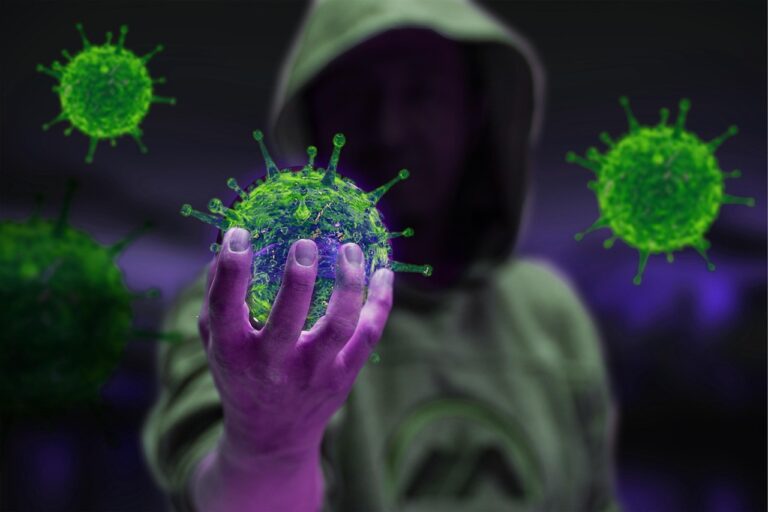Book Appointment Now

The Role of Nurses in Combatting Antimicrobial Resistance
Antimicrobial resistance (AMR) is a silent global crisis, threatening to undermine decades of medical progress and rendering once-effective treatments obsolete. According to the World Health Organization, AMR is among the top ten public health threats of our time, with far-reaching consequences for healthcare systems worldwide. Amid this growing challenge, the role of nurses in combatting antimicrobial resistance emerges as indispensable. As frontline healthcare providers, nurses are uniquely positioned to influence antibiotic stewardship and implement infection prevention measures. This essay explores how nurses promote responsible antibiotic use, educate patients, and champion infection control practices, demonstrating their critical contribution to mitigating AMR and safeguarding public health.
Our nursing experts can deliver 100% custom paper about role of nurses in combatting antimicrobial resistance according to your order instructions.
Write my nursing essay
Understanding Antimicrobial Resistance
AMR occurs when microorganisms evolve to resist the effects of medications that once effectively treated them. The World Health Organization (WHO) has identified AMR as one of the top ten global public health threats facing humanity, emphasizing the need for coordinated efforts to address this issue (WHO, 2020). The overuse and misuse of antibiotics in healthcare settings are primary contributors to the development of resistant strains of bacteria. Nurses, due to their extensive patient contact and clinical expertise, are ideally positioned to influence antibiotic prescribing practices and enhance infection control measures.
Promoting Responsible Antibiotic Use
Nurses contribute significantly to antimicrobial stewardship programs (ASPs), which are coordinated efforts aimed at improving the use of antimicrobials. Their responsibilities include:
- Educating Patients: Nurses provide critical information about the appropriate use of antibiotics, emphasizing the importance of completing prescribed courses and understanding potential side effects (Carter et al., 2018). By educating patients on the risks associated with misuse, nurses help foster a culture of responsible antibiotic use.
- Monitoring Prescribing Practices: Nurses are often involved in monitoring antibiotic prescriptions, ensuring adherence to established guidelines. They assess patients for signs of infection and collaborate with physicians to determine the necessity of antibiotic therapy (Trivedi et al., 2014). This collaborative approach helps reduce unnecessary prescriptions.
- Implementing Guidelines: Nurses play a vital role in implementing clinical guidelines for antibiotic use within healthcare settings. They ensure that prescribing practices align with evidence-based recommendations, which is essential for effective antimicrobial stewardship (Edwards et al., 2011).
Infection Prevention Strategies
In addition to promoting responsible antibiotic use, nurses are integral to infection prevention efforts. Their contributions include:
- Practicing Infection Control: Nurses implement standard precautions such as hand hygiene, proper use of personal protective equipment (PPE), and environmental cleaning. These practices are critical in preventing the spread of infections and thereby reducing the need for antibiotics (Madran et al., 2019).
- Recognizing Infections Early: By being vigilant in recognizing early signs and symptoms of infections, nurses can initiate timely interventions that may prevent complications requiring antibiotic treatment. Early detection is key to managing infections effectively and reducing reliance on antimicrobials (Gillespie et al., 2013).
- Collecting Microbiological Samples: Nurses ensure that specimens for microbiological testing are collected correctly and promptly. This practice is essential for accurate diagnosis and appropriate treatment decisions, which can minimize unnecessary antibiotic use (Trivedi et al., 2014).
Education and Training
Ongoing education and training for nurses are crucial in enhancing their knowledge and skills related to AMR. Various educational programs focus on:
- Understanding AMR: Training sessions that cover the mechanisms of resistance, current trends in AMR, and best practices for prescribing can empower nurses to take an active role in combating this issue (WHO, 2020).
- Antimicrobial Stewardship Programs: Specialized training on ASPs equips nurses with the knowledge needed to participate effectively in these initiatives. This includes understanding protocols for monitoring antibiotic use and engaging in quality improvement projects within their healthcare settings (Carter et al., 2018).
Challenges Faced by Nurses
Despite their critical role, nurses face several challenges in combating AMR:
- Limited Resources: Many healthcare facilities lack adequate resources for training and implementing ASPs effectively. This limitation can hinder nurses’ ability to engage fully in antimicrobial stewardship efforts (Madran et al., 2019).
- Resistance from Other Healthcare Professionals: Nurses may encounter resistance from other healthcare providers regarding changes in prescribing practices or adherence to guidelines. Effective communication and collaboration among all members of the healthcare team are essential for overcoming these barriers (Gillespie et al., 2013).
- High Workload: The demanding nature of nursing can limit the time available for education on AMR and engagement in stewardship activities. Addressing workload issues is crucial for enabling nurses to fulfill their roles effectively (Edwards et al., 2011).
In the fight against antimicrobial resistance, the role of nurses in combatting antimicrobial resistance is both pivotal and multifaceted. By promoting responsible antibiotic use, educating patients, and implementing rigorous infection prevention strategies, nurses serve as frontline defenders against this global health threat. Their expertise in patient care and collaboration with interdisciplinary teams make them indispensable in antimicrobial stewardship programs. However, addressing challenges such as limited resources and high workloads is essential to fully leverage their potential. As healthcare systems continue to grapple with AMR’s complexities, empowering nurses with the tools and support they need will be crucial in safeguarding the efficacy of antibiotics for future generations.
References
Carter, M., Edwards, J., Ellen, H., Gillespie, M., & Trivedi, K. (2018). Knowledge, Attitude and Beliefs of Nurses Regarding Antibiotic Use. PMC.Edwards, J., Ellen, H., & Gillespie, M. (2011).
The Role and Responsibilities of Nurses in Antimicrobial Stewardship. ResearchGate.Gillespie, M., Trivedi, K., & Carter, M. (2013).
The Role of Nurses in Antimicrobial Stewardship: A Scoping Review. PubMed.Madran, B., & Others. (2019).
How Nurses Can Contribute to Combating Antimicrobial Resistance in Practice Research and Global Policy. ResearchGate.Trivedi, K., Edwards, J., & Others. (2014).
Antimicrobial Stewardship Programs: A Review on Roles of Nurses. PubMed.WHO. (2020). From the Frontline Against Antimicrobial Resistance – Nurses Share Their Advice. World Health Organization.







